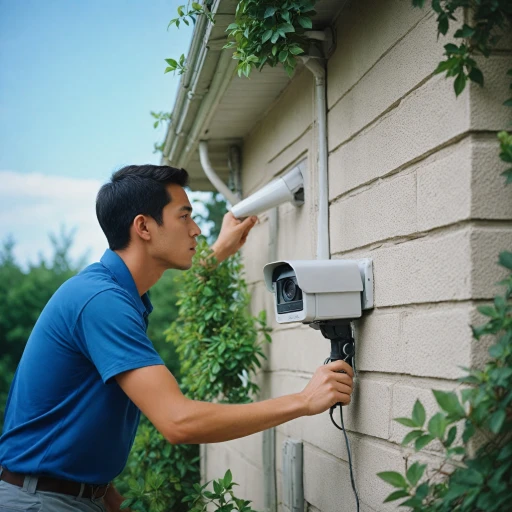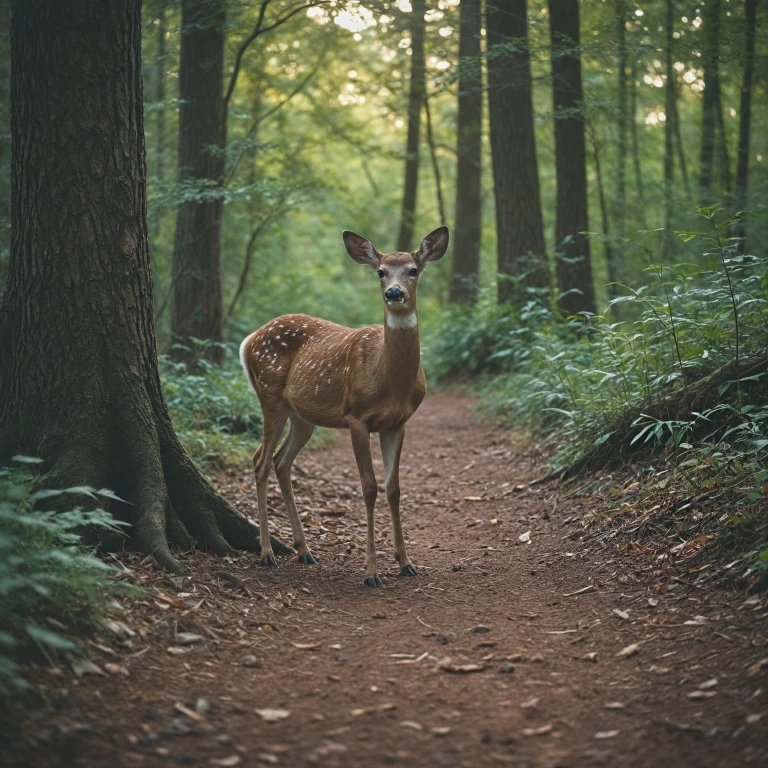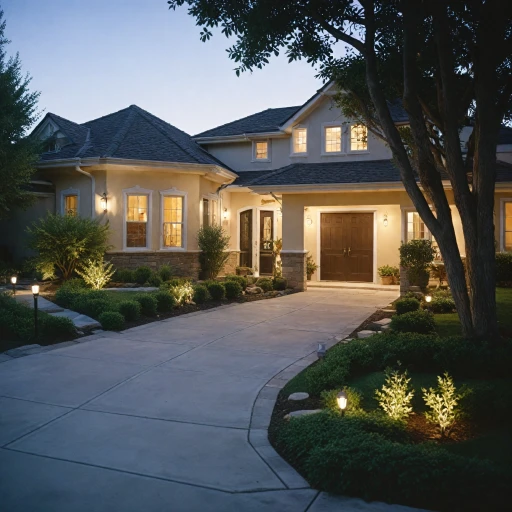
Understanding IP Cameras for Outdoor Use
Grasping the Concept of Outdoor IP Cameras
When it comes to enjoying the wonders of wildlife from the comfort of your home, an IP camera is an essential tool. These marvels of technology bring the outdoor alive by allowing you to witness the antics of birds in a nest box or catch a glimpse of nocturnal animals with night vision capabilities. Unlike traditional cameras, IP cameras are equipped to transmit video data over a network, ensuring that you can keep tabs on your surroundings in real-time through live streaming. Outdoor IP cameras come with a variety of features that make them suitable for wildlife monitoring. They are designed with durability in mind, enduring harsh weather conditions while providing high-resolution video feed. A reliable outdoor camera ensures that there's little compromise in quality, whether it's night or day, with excellent night vision features to capture those twilight moments. For those leaning towards a more connected experience, certain cameras offer cellular capabilities, eliminating the need for WiFi connectivity and boosting range. Such features are vital when setting up your wildlife camera far from the nearest internet source. Cellular trail cameras let you keep an eye on trail activities remotely, ensuring you're always connected. Some products in the market, like the popular [A Comprehensive Look at Ring’s Outdoor Camera], illustrate how advanced technology can be leveraged for both security and wildlife observations. The versatility of these cameras makes them an invaluable addition to your outdoor setup, whether you're looking to protect your property or simply enjoy nature right outside your door.Key Features to Look for in an Outdoor IP Camera
Essential Features for Quality Wildlife Monitoring
When exploring outdoor IP cameras for monitoring the wonders of wildlife, certain features stand out, helping ensure that you capture clear and actionable footage. Here’s what to look for:
- High Resolution: A high-resolution camera is crucial for capturing detailed footage of wildlife, especially in dense foliage. Opt for cameras with at least 1080p video for clear imagery.
- Night Vision Capability: Since many animals are active during dawn, dusk, or at night, night vision is a must. Infrared vision will help you to capture clear images regardless of the time.
- Power Options: Consider the power supply of your camera. Some rely on wired power, while others like cellular trail cameras may include battery options. Evaluate battery life, especially if the camera will be placed far from a power source.
- Connectivity: Wifi connections for live streaming can enhance your monitoring experience, though note the potential for connectivity issues in remote areas. Alternatives like cellular cameras can be considered to maintain connectivity even in isolated locations.
- Durable Design: A weatherproof, durable build is essential for outdoor cameras, ensuring they withstand the elements and remain operational across different seasons.
- Lenses and Field of View: A wide lens provides a comprehensive field of view, increasing coverage — vital for monitoring larger areas like gardens or woodlands.
For those interested in recording more than visuals, some IP cameras support audio recording, adding a layer of immersion to the monitoring experience. Additionally, if you want to capture specific wildlife behavior, such as nesting birds, installing a specialized bird box camera could be beneficial. For further guidance on enhancing your setup with technology, refer to our comprehensive guide on outdoor motion sensors.
Installation Tips for Optimal Wildlife Monitoring
Maximizing the Effectiveness of Outdoor IP Cameras for Wildlife Observation
Monitoring wildlife in its natural habitat can be an exciting endeavor. But for an effective setup, it’s crucial to follow a few installation tips that will optimize the performance of your outdoor IP cameras.Position your camera strategically: The key to capturing quality footage lies in the placement of your camera. For the best outdoor results, choose a location that covers the main area of wildlife activity. Whether you're interested in a bird box or a specific trail, ensure that the camera is at the right height and angle. Cameras with wide-angle lens capabilities can provide a broader field of view, which is great for monitoring larger areas.
Secure and protect your equipment: Outdoor cameras are exposed to the elements, so it's important to ensure their durability. Opt for cameras with waterproof or weather-resistant designs. A trail camera or security camera with a durable exterior will withstand rain, snow, and even dust. If you're using a bird box camera, make sure it is securely installed to avoid disturbing the wildlife you're observing.
Utilize night vision features: Since wildlife is often most active at dawn and dusk, investing in a camera with night vision capabilities can significantly enhance your monitoring efforts. Look for options that offer high-quality resolution to capture clear images even in low-light conditions.
Consider connectivity and power sources: When setting up outdoor wildlife monitoring, connectivity is crucial. Opt for security cameras with wifi, cellular capabilities, or both, depending on your location. This will allow for live streaming or accessing footage remotely. Additionally, assess the power options available; cameras powered by batteries should offer extended battery life to minimize the need for frequent maintenance.
For a more comprehensive solution, consider integrating your wildlife observation setup with your home security systems. This integration can offer additional benefits, such as using motion sensors to trigger recordings only when activity is detected, thereby preserving battery life and storage. For further guidance, visit this helpful blog on using a combined approach to secure and enhance outdoor security.
Choosing the right setup for your specific wildlife monitoring needs can significantly impact the quality of your observations. Whether you're a bird enthusiast or interested in capturing larger wildlife, these considerations will help make your outdoor venture productive and enjoyable.
Integrating IP Cameras with Home Security Systems
Seamless Integration with Home Security Systems
Integrating IP cameras into your existing home security system can significantly enhance your outdoor wildlife monitoring efforts. By doing so, you not only keep an eye on your property but also gain insights into the wildlife activity around your home. Here’s how you can achieve a seamless integration:
- Compatibility: Ensure that the IP camera you choose is compatible with your current security system. Most modern security systems support a range of cameras, including those with cellular and WiFi capabilities. This allows for easy integration and live streaming of video footage.
- Centralized Monitoring: By integrating your wildlife cameras with your home security system, you can monitor all activities from a single interface. This is particularly useful if you have multiple cameras set up for different purposes, such as a bird box camera or a trail camera for night vision monitoring.
- Enhanced Features: Integration can unlock additional features such as motion detection alerts and night vision capabilities. These features are crucial for effective wildlife monitoring, especially during nighttime when many animals are active.
- Power Management: Consider the power requirements of your cameras. Some outdoor cameras offer battery life options, while others may require a constant power source. Ensure your setup supports the power needs of your cameras to avoid interruptions in monitoring.
- Cost Efficiency: While the initial price of integrating IP cameras with your security system might seem high, it can be cost-effective in the long run. You can often find cameras on sale, and the added security and wildlife insights can justify the investment.
By carefully selecting and integrating the right IP cameras, you can create a comprehensive security and wildlife monitoring system that serves multiple purposes, from safeguarding your home to observing the natural world around you.
Privacy and Ethical Considerations
Privacy and Ethical Considerations in Outdoor Wildlife Monitoring
When setting up a home security system incorporating IP cameras to enhance outdoor wildlife monitoring, it is crucial to consider privacy and ethics. Wildlife cameras, such as trail cameras and bird box cameras, offer valuable insights into the lives of outdoor creatures. Nevertheless, ensuring these tools respect the surrounding environment is essential. Firstly, be aware of legal requirements in your area regarding surveillance and privacy. Some regions have strict regulations about using cameras, especially in public or shared spaces. If your nest box or security camera picks up activities beyond your property, it's wise to ensure your setup complies with local laws. Moreover, consider the impact on wildlife. The best outdoor security cameras often feature night vision capabilities, allowing for clear video capture in low-light conditions. However, bright flashes or intrusive lighting can disturb animals, so opt for cameras with infrared night vision to minimize disruption. Ethical wildlife monitoring means prioritizing the needs of the animals. Avoid placing cameras too close to nests or dens, and use tools like cellular trail cameras sparingly, as frequent disturbances can stress wildlife. Finally, think about data security. Ensure that your wifi-enabled IP cameras are equipped with robust security features to prevent unauthorized access. Regularly update passwords and security settings to protect your live streams and recorded footage. By balancing technology and ethical considerations, you can achieve a successful outdoor wildlife monitoring setup that respects privacy and fosters a deeper connection with nature.Choosing the Right IP Camera for Your Needs
Picking the Perfect IP Camera to Meet Your Demands
Selecting the right IP camera for your wildlife monitoring needs requires careful consideration of various factors that can make a difference in performance and effectiveness. Here are key elements to guide your decision:- Resolution and Clarity: High-resolution video is crucial for capturing clear images and details of wildlife activities. Opt for cameras that offer good megapixel counts to ensure crisp and sharp footage.
- Night Vision Capabilities: For effective monitoring during low-light conditions, a camera with superior night vision is essential. Infrared or thermal imaging features will improve visibility when monitoring after dark.
- Durability for Outdoor Conditions: Given the outdoor use of these cameras, ensure that they are weatherproof and rugged enough to withstand harsh conditions. Look for cameras with high IP ratings for water and dust resistance.
- Power Supply Options: Depending on your setup, you might need a camera with flexible power options. Cameras with cellular trail capabilities or those powered by solar panels can offer continuous monitoring without frequent battery replacements.
- Connectivity and Streaming: If you plan on live streaming or accessing footage remotely, a camera with reliable WiFi or cellular connectivity is vital. This feature ensures seamless data transmission and access to real-time feeds.
- Field of View and Lens Quality: The lens and field of view determine how much area the camera can cover. A wide-angle lens with adjustable settings will give better coverage for extensive wildlife monitoring.
- Integration with Existing Systems: If you already have a security system in place, consider cameras that can easily integrate into your setup. This facilitates cohesive monitoring and management of your security and wildlife observation needs.













